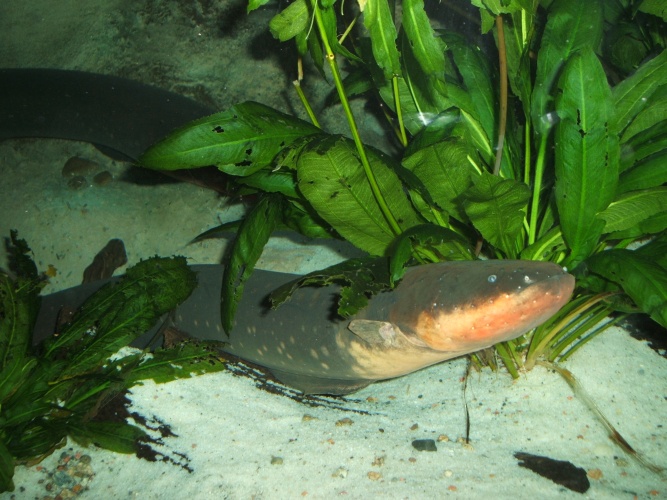Electric eel inspires biocompatible hydrogel battery
Researchers in Switzerland and the US have been inspired by the electric eel to create a biocompatible hydrogel battery that could power devices inside the body.

(Credit: Steven G Johnson via CC)
Electric eels combine potassium and sodium ions in cell membranes to deliver their trademark jolt. Mimicking that system, the researchers used the sodium and chloride constituents of salt, dissolved in a hydrogel. Thousands of tiny droplets of the salty gel were printed on a plastic sheet, alternating them with hydrogel droplets of pure water. The team then created a second sheet of alternating droplets made of charge-selective hydrogel. Each droplet allows either positively charged sodium or negatively charged chloride to pass, while at the same time excluding the other.
When the sheets are pressed together, the salty and fresh solutions mix, the charge-selective droplets move the sodium and chloride ions in opposing directions, and an electric current is produced. The work, published in Nature, featured input from scientists and engineers from the University of Michigan, the Adolphe Merkle Institute at Switzerland’s University of Fribourg, and the University of California-San Diego.
Register now to continue reading
Thanks for visiting The Engineer. You’ve now reached your monthly limit of news stories. Register for free to unlock unlimited access to all of our news coverage, as well as premium content including opinion, in-depth features and special reports.
Benefits of registering
-
In-depth insights and coverage of key emerging trends
-
Unrestricted access to special reports throughout the year
-
Daily technology news delivered straight to your inbox










BEAS funding available to help businesses cut energy costs
And not a moment too soon, if the following exchange broadcast last Friday 13th June, on the Radio 4 ´Rare Earth´ program (link below, ~ 17 minutes...